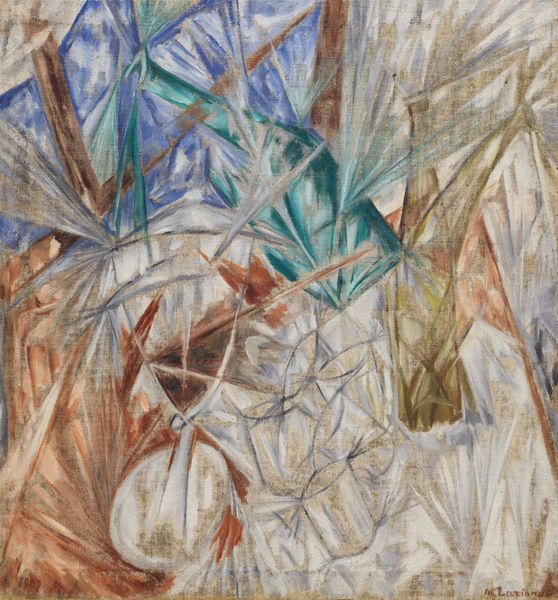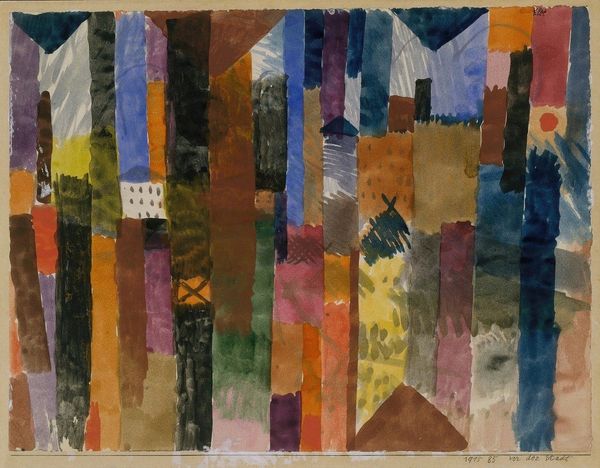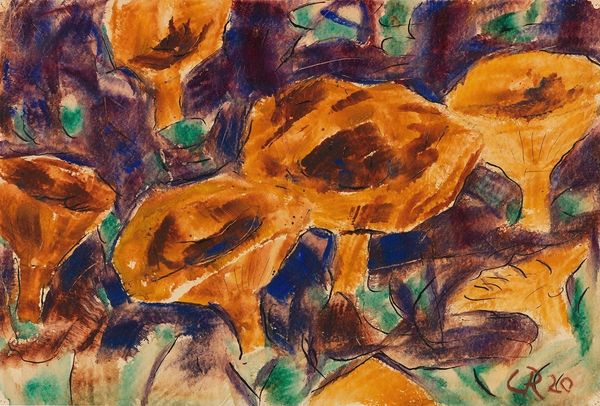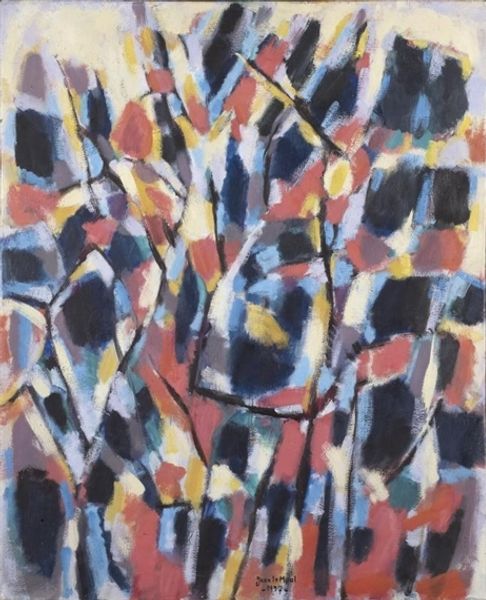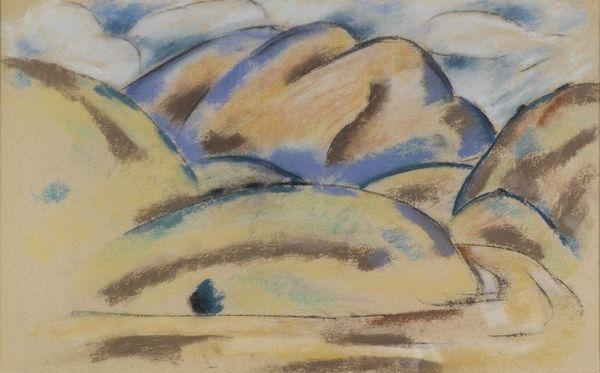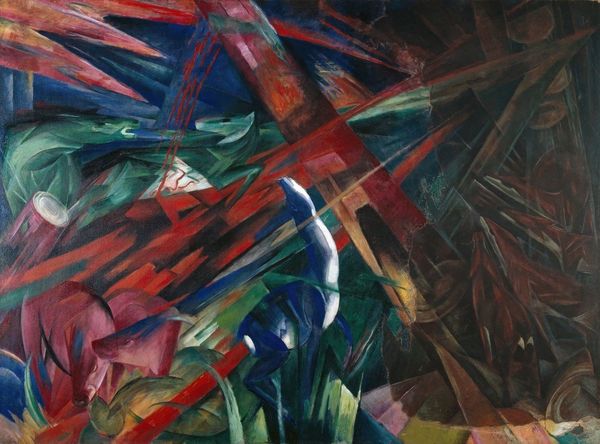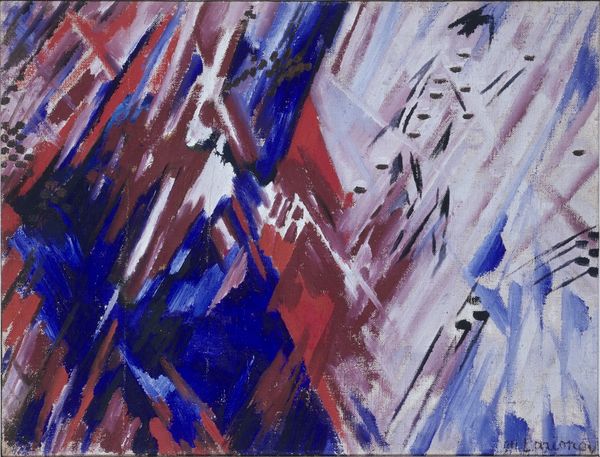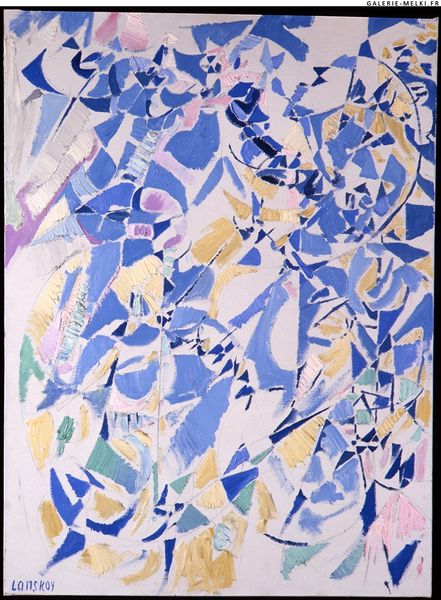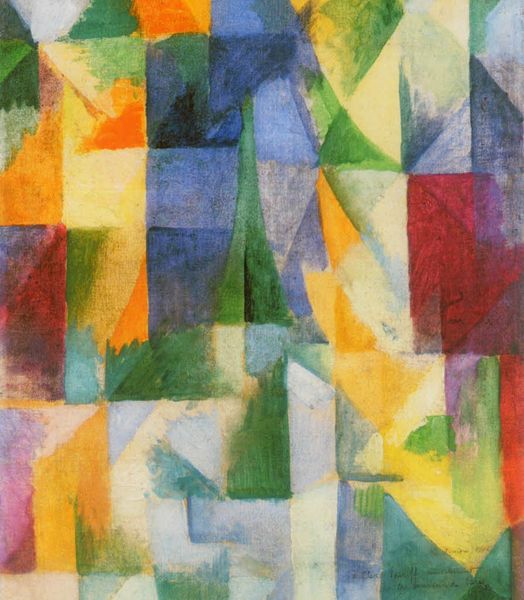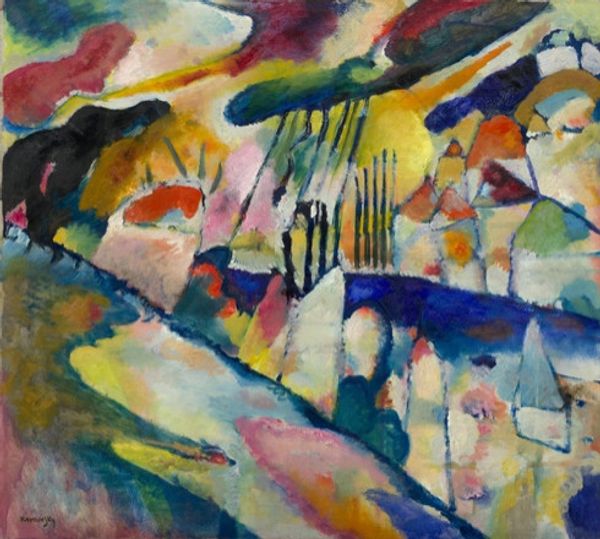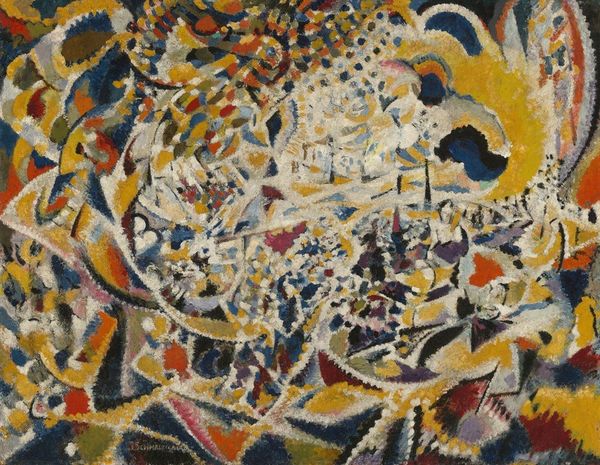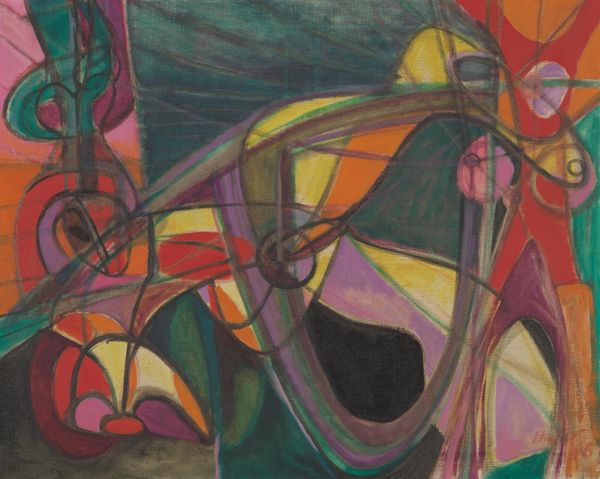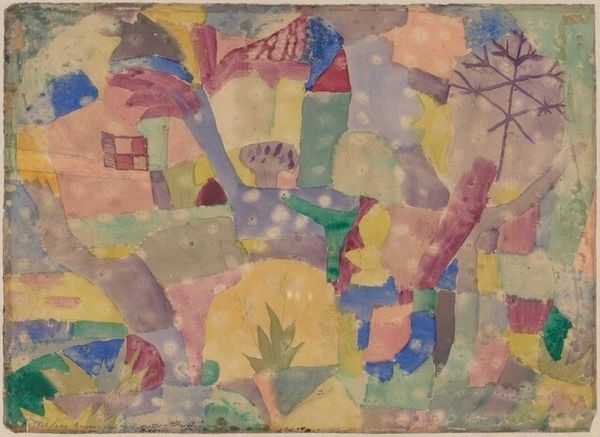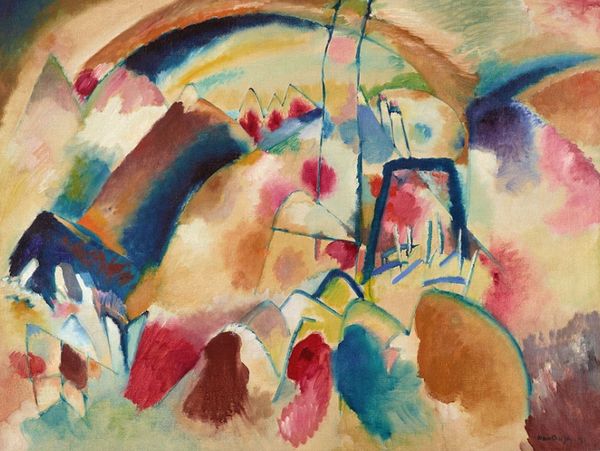
painting, oil-paint
#
painting
#
oil-paint
#
rayonism
#
abstract
#
form
#
geometric
#
line
Copyright: Public domain US
Curator: Mikhail Larionov's "Rayonist Sausages and Mackerel," an oil on canvas painted in 1912. Editor: Well, the name is certainly intriguing. At first glance, the arrangement of colors and geometric shapes, particularly the blues and browns, gives me a cold feeling of disorientation. Like looking into fractured glass, maybe. Curator: Indeed. Larionov was a pioneer of Rayonism, also called Luchism, which sought to capture the essence of light rays reflected from objects rather than the objects themselves. You can see him trying to depersonalize the artistic gesture by depicting movement, or perhaps to create dynamic space that engages a new kind of modern viewer. The emphasis is on formal experimentation over realistic representation, signaling its radical break from earlier modes of realism. Editor: So, even though the title declares sausages and mackerel, we’re not meant to see, say, the *idea* of food here? Instead, he uses these food objects, for lack of a better term, to channel more essential visual components. It makes one ponder why he picked these objects specifically, doesn’t it? Sausages and mackerel, both processed and preserved... Curator: Absolutely, that tension, the combination of a seemingly mundane subject matter, so linked to early-twentieth-century Russia and its marketplace and social changes, coupled with this intensely radical abstraction makes one confront how modern audiences encountered a world reshaped by mass production, but at the same time he allows the objects' essences to become transformed by light and form into something ethereal, almost spiritual. Editor: I think it speaks volumes about the shifting understanding of reality. By breaking the objects down into fractured rays, Larionov isn't just showing us what they look like, but rather how these essential symbols intersect within our perception and memory. This "fragmentation" of sausages and mackerel carries a specific, deeply personal and cultural weight. Curator: But consider this artwork within its exhibition context, shown along other experiments in radical Russian avant-garde forms. The broader implication is in asserting art's autonomy as an exploration of purely aesthetic qualities, even to the seeming exclusion of recognizable subjects. It’s not an accidental jumble of colors; it represents a determined pursuit of formal innovation, fueled by theoretical debate about how visual art and Russian culture must adapt for a new era. Editor: Seeing those fragmented shards really highlights that disconnect you are pointing toward. I come away understanding more deeply how, by playing with these very recognizable, but deliberately manipulated images, Larionov compels us to re-evaluate familiar symbols—opening up our minds to alternative forms of knowledge. Curator: A fruitful contemplation, indeed!
Comments
No comments
Be the first to comment and join the conversation on the ultimate creative platform.
